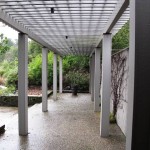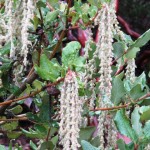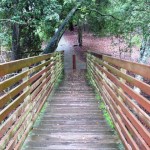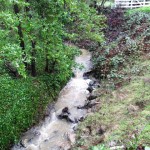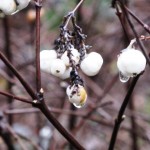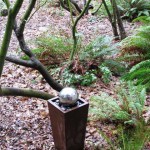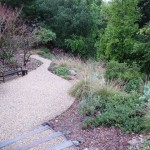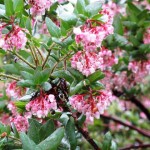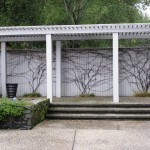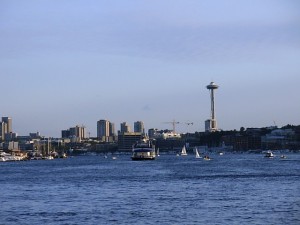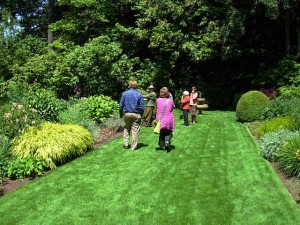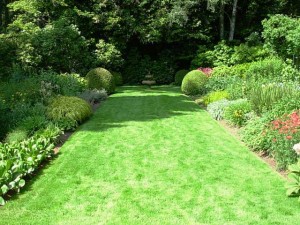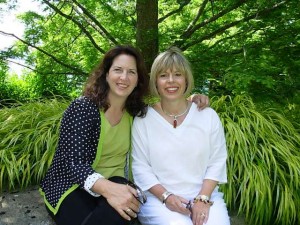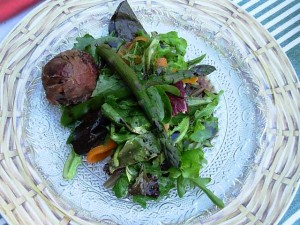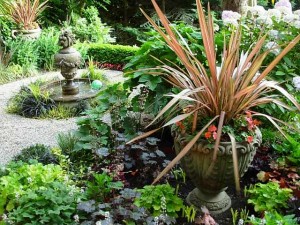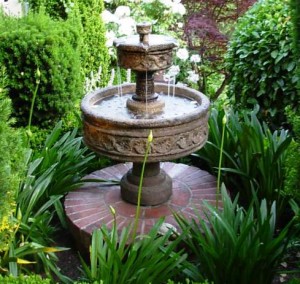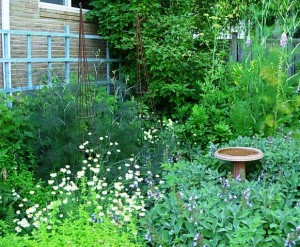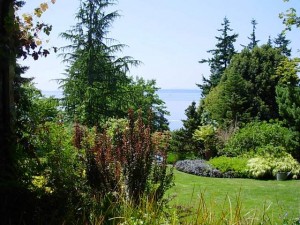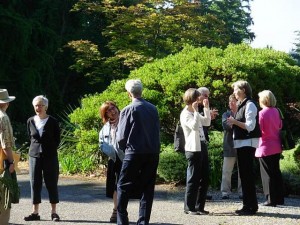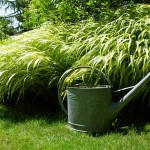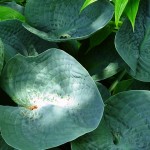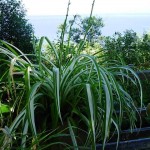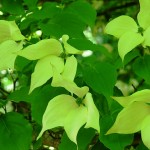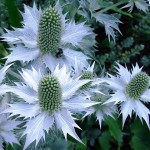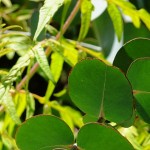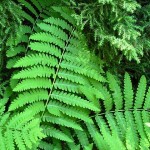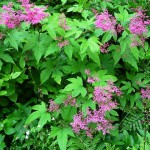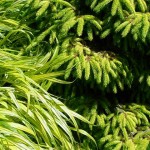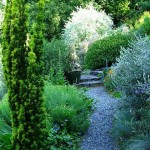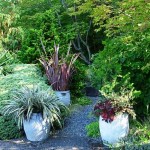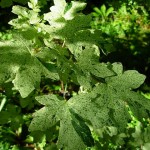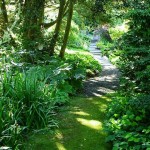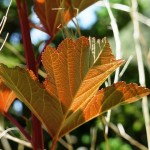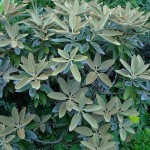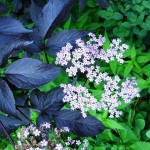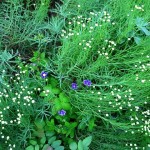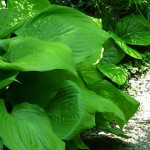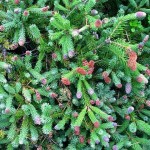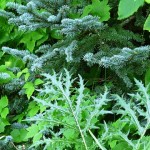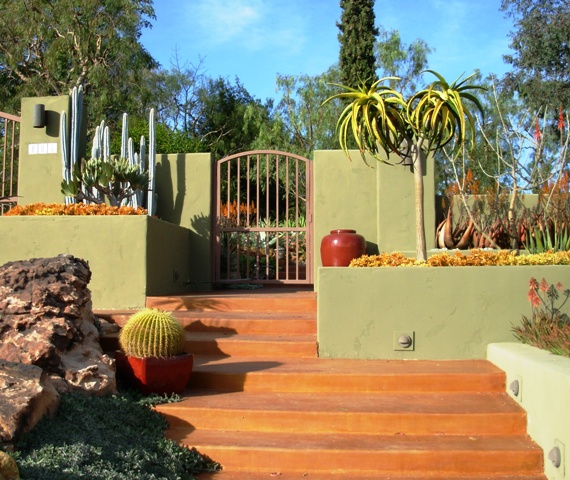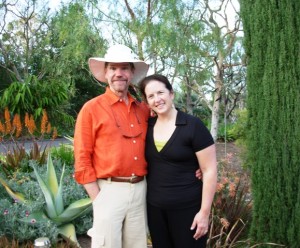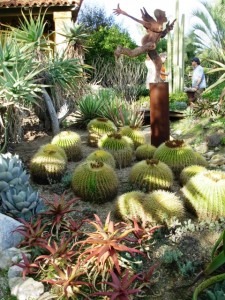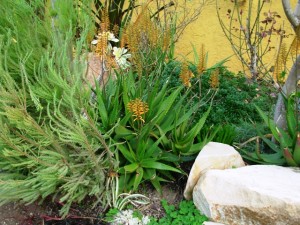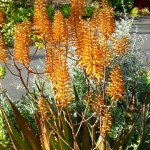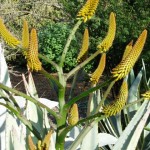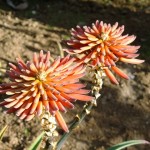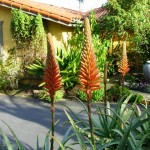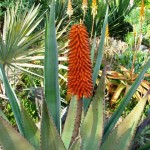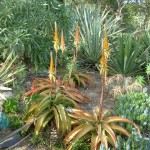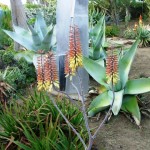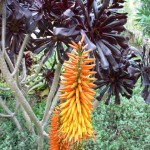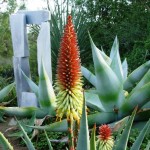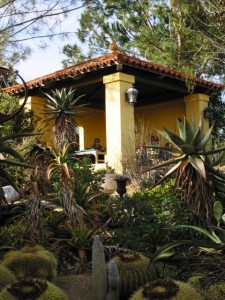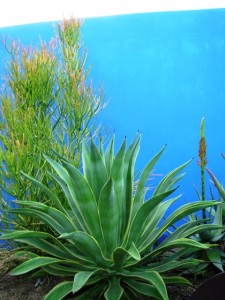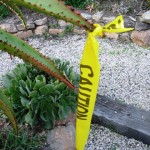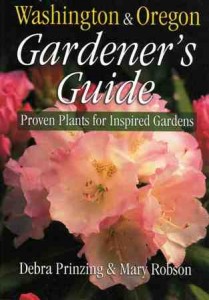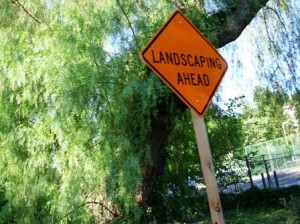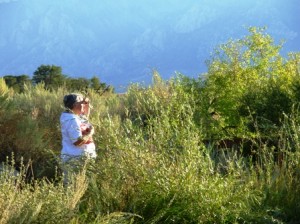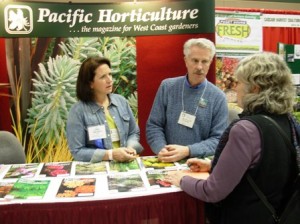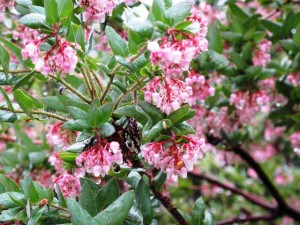
I competed with a hummingbird to get up close and personal with this gorgeous Manzanita. Katherine has a trio of them, small multi-trunk trees, in full January bloom.
Katherine Greenberg is a passionate native plant expert whose naturalistic landscape in the East Bay community of Lafayette has inspired hundreds of tourgoers and garden club students who have taken her workshops about growing California natives in the domestic environment.
I have known Katherine for about five years through our association as fellow board members of the Pacific Horticulture Society (she is former board president). Although we only see one another two or three times a year at board meetings, there is always a friendly connection as fellow horticulture enthusiasts. And also as writers.
Katherine has just signed on to completely revise and expand a classic title, Growing California Native Plants. Written by the late Marjorie G. Schmidt in 1980, the guide originally introduced the idea of using native plants as elements of the landscape. Tens of thousands of copies have sold, but over the course of the book’s 30-year run, lots has happened in the cultivation of natives. More growers are propagating and breeding native plants and there has been an explosion of interest in changing how our yards and gardens look.
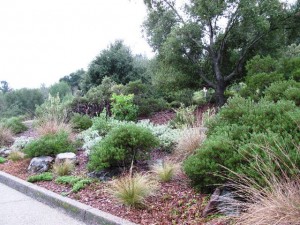
Katherine's entry garden in winter.
Lucky for California homeowners, University of California Press asked Katherine to create a new version of Growing California Native Plants. Uber-organized as she is, Katherine just signed the contract this past fall and has the entire book mapped out with most of the plant profiles rewritten (with a greatly expanded plant list, as one would expect). She is going to include many of the original illustrations and add up to 200 photographs in the new guide, expected out in 2011. Keep an eye out for its release.
Katherine’s own garden, approximately one-acre in size on a ridge above a seasonal creek called Happy Valley Creek, is a laboratory for living with natives, celebrating the seasons, and encouraging harmony with nature. It was profiled last spring in Diablo, the East Bay lifestyle magazine. You can read “Going Native,” the story, and see Saxon Holt’s lovely photography here.
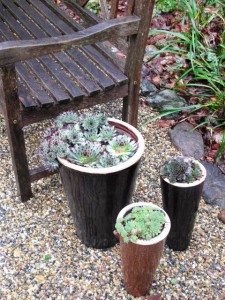
I love the sweet display of drought-tolerant, cold-hardy hen-and-chicks in tall vessels
I had a quick trip to Oakland this past Wednesday and Thursday and Katherine graciously hosted me for an overnight before I gave a talk to the “Dirt Daubers,” an Orinda-based garden club.
Even though it was dreary and rainy out, I made sure to take a loop through Katherine’s garden. Seeing a native garden in winter is really a joy because the plants in fruit or in bloom are like little sparkling jewels that catch your eye against the silver-grey and green foliage and mahogany and white bark.
In the Diablo magazine article, written by Sandra Ann Harris, Katherine explains her commitment to designing with California natives:
“Gardening with these natural treasures is a way we can play a big role in preserving endangered plants and in making a connection to the place we live,” Greenberg says. “My garden won’t be complete in my lifetime, but it’s a celebration of our natural heritage.”
Here’s a little gallery of wintry photos to calm and sooth you. Thoughts of spring are accelerating as we catch glimpses of new growth emerging on stems and in swelling buds (especially after all the rain California has had – six consecutive days of it!).
- The entry pergola has an urn at its terminus
- Another winter garden surprise: Silk tassel (Garrya elliptica)
- A view along the bridge to the path below Katherine’s garden
- Active from winter rains, Happy Valley Creek, as seen from the wooden footbridge
- Snowberry (Symphoricarpos mollis)
- Katherine designs with a light hand, including her use of ornamentation. Yet when I looked outside the guest bedroom window in the morning, this small gazing ball amid ferns caught my eye
- The pathway through the lower garden widens at the center to create a gravel gathering space, complete with bench
- I competed with a hummingbird to get up close and personal with this gorgeous Manzanita. Katherine has a trio of them, small multi-trunk trees, in full January bloom.
- The entry pergola is stunning and yet simple in its design









